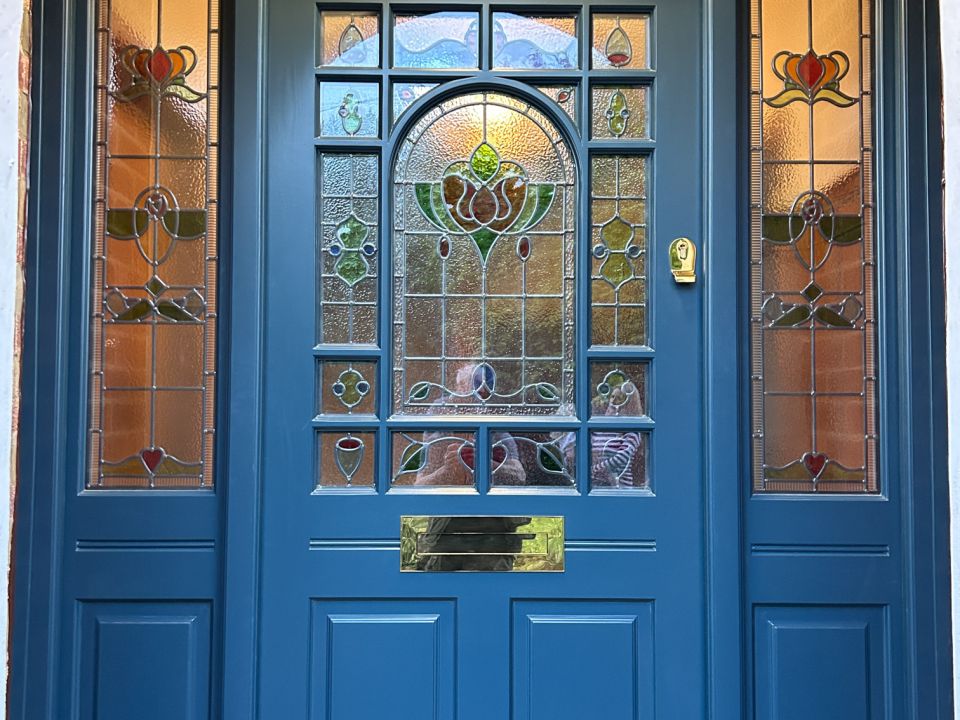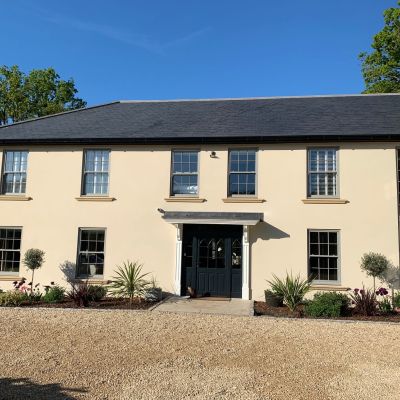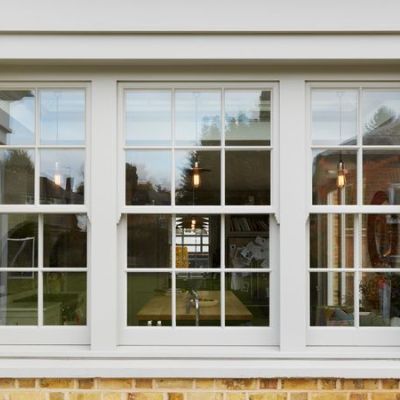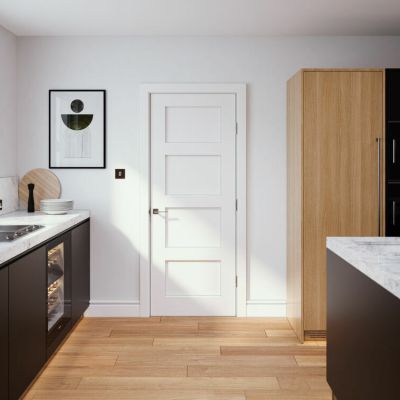A short history of doors in the Victorian era

Few architectural features evoke as much nostalgia and timeless elegance as the Victorian front door. From the ornate panel profiles to the jewel-like glow of stained glass inserts, these entrances command attention and make a statement about the home they guard. As essential focal points of curb appeal, Victorian era doors balance functional design with artistic flourish, ensuring that passersby pause in admiration and homeowners equally revel in the grandeur of their heritage properties.
For architects, restorers, and interior designers, an authentic Victorian door is far more than a decorative afterthought. It is a complex interplay of history, craftsmanship, and materiality that speaks to the social aspirations of the 19th century. Understanding the stylistic evolution of these doors allows professionals to make informed decisions during conservation or reproduction projects, ensuring every moulding, pane, and piece of hardware aligns with period-accurate standards.
Among specialist suppliers, Old English Doors stands out for its bespoke, heritage-accurate wooden joinery. Drawing on meticulous research and traditional joinery techniques, they craft and restore doors that seamlessly integrate original design language with modern performance expectations. Whether you are seeking to revive an original treasure or commission a faithful reproduction, this guide will equip you with the insights needed to preserve the distinct character and structural integrity of Victorian front doors.
Historical Overview: The Victorian Door Story
The Victorian era (1837–1901) witnessed an unprecedented interest in craftsmanship and ornamentation, driven by industrial advances and a burgeoning middle class eager to display newfound prosperity. Early in Queen Victoria’s reign, front doors were often simple, four-panel constructions made from sturdy hardwoods such as oak or walnut. These unadorned panelled doors nevertheless communicated stability and status through careful proportions and finely carved mouldings.
By the mid-19th century, the Gothic Revival and Arts & Crafts movements inspired homeowners to embellish their entrances with stained and leaded glass. Fanlights and sidelights—arched or rectangular—began to feature richly coloured glass panes, sometimes etched with medieval motifs or floral patterns. These inserts not only enhanced visual interest but also introduced gentle natural illumination into otherwise dim vestibules.
As tastes shifted in the late Victorian period, Art Nouveau began to influence door design. Curvilinear forms, asymmetrical floral tracery, and sinuous lead lines in the glass offered a more organic counterpoint to earlier geometric styles. Door frames and architraves took on looser, more flowing profiles, signalling a departure from strictly rigid classical forms.
In stark contrast to these grand front doors, vernacular back entrances often employed tongue-and‑groove ledged and braced constructions—simple but weather-resistant solutions for service use. Despite their functional focus, these doors sometimes featured subtle beadwork or small glazed panels, reflecting a desire for cohesion between all entrances of a property.
Key Design Features & Materials
Panel Layout & Door Frames
Victorian front doors most commonly utilised a four-panel configuration—two panels above and two below—balanced by heavy stiles and rails. The panels themselves could be flat, raised, or fielded, set within a sturdy frame that was often enriched with bolection mouldings or beaded edges. The door surround, or architrave, frequently featured pilasters or twisted columns, lending a dignified sense of grandeur to the entrance.
Glass Inserts & Fanlights
Fanlights first gained popularity in the 1840s, offering a decorative crowning element above the door. Early examples featured coloured or clear leaded glass, arranged in radial or geometric patterns. By the 1870s, William Morris and other Arts & Crafts visionaries had reintroduced medieval-inspired motifs—stylised leaves and lancet arches—in etched or stained glass panels. These inserts delivered both beauty and daylight, animating doorways with rich, kaleidoscopic hues.
Hardware – Brass, Cast Iron & Door Furniture
Hardware on Victorian doors was as ornamental as it was functional. Polished brass knobs and knockers shone against dark woods; letter-box plates and escutcheons bore intricate Victorian flourishes. Cast-iron butt hinges and rim locks provided robust security, often embellished with scrolling patterns. Many doors also incorporated foot scrapers or boot scrapers at the base, merging practical necessity with decorative metalwork.
Materials & Construction Insights
Victorian doormakers favoured durable hardwoods such as oak, mahogany, and pitch pine—timbers prized for their stability and rich grain. The traditional construction method involved the panel-and-frame system: solid timber stiles and rails mortised and tenoned together, enclosing floating panels that could expand and contract with seasonal humidity.
Finishes ranged from oil-based paints—popular in lighter shades for later Victorian tastes—to faux grain effects that mimicked more expensive woods. Clear varnishes and shellac were employed to showcase natural timber, built up in thin, hand-rubbed coats. Early doors might also display finely grained finishes using bespoke graining tools, a testament to craftsmen’s skill in creating luxurious appearances on modest substrates.
Restoration & Refurbishment Tips
Assessment & Preparation
Begin by inspecting door leaves, frames, and hardware for signs of rot, warping, or insect damage. Check panel stability, look for split mouldings, and note any loose joints. Document current paint layers, as these can offer clues about original colours and finishes.
Stripping & Surface Prep
When removing old finishes, traditional shellac can be softened with alcohol or steam. For painted doors, gel-based strippers minimise timber swelling, while abrasive methods should be used sparingly. Exercise caution if lead paint is suspected—containment and professional disposal are essential for health and environmental safety.
Wood Repair & Filling
Small cracks and voids can be filled with colour-matched epoxy or wood repair consolidants. For extensive decay, carefully cut out rotten sections and splice in new hardwood. Ensure tenons and mortises remain tight, reinforcing joints with reversible, conservation-grade adhesives.
Re-glazing Fanlights and Panels
Sourcing authentic stained glass requires specialist suppliers or glass studios skilled in hand-cutting and leading. Document original patterns and lead profiles before removal. When installing new inserts, bed the glass in linseed oil putty and dress the leads to match historical profiles.
Restoring Hardware
Clean brass fittings with pH-neutral solutions to prevent over-polishing that erases maker’s marks. Cast-iron components benefit from rust removal via gentle wire-brushing, followed by preservation coats of clear wax or acid-resistant primer. Retain antique escutcheons and cover plates whenever possible to maintain provenance.
Finishing with Heritage Accuracy
Develop a finish schedule based on historical paint analysis: early Victorians favoured dark greens and maroons, while later decades introduced cream and pastel palettes. Apply primers, undercoats, and finishing coats in thin layers, allowing adequate drying time to replicate traditional paint build-up.
Installing or Sourcing Authentic Victorian Doors
Homeowners and professionals can choose between salvaged originals, high-quality reproductions, or bespoke new builds. Salvaged doors offer genuine patina but may require extensive conservation. Reproductions provide a cost-effective route to period detail but often rely on modern materials.
Bespoke manufacturers like Old English Doors employ rigorous period research to craft each door from scratch. Their process includes archival drawing analysis, careful selection of kiln-dried hardwood, and precise machining of panel profiles. Every door is fitted with “Diamond Standard” snap-proof locks, ensuring security without compromising historical authenticity.
Whether repurposing an existing door or installing a new one, working with a specialist ensures compliance with conservation regulations and guarantees craftsman-grade quality. Authentic glass, period-appropriate hardware, and accurate architrave detailing come together to preserve or recreate the unmistakable charm of Victorian entrances.
Why Victorian Era Doors Remain Popular Today
Victorian era doors continue to captivate modern homeowners and designers for their emotional resonance and aesthetic versatility. These doors convey a narrative of quality, tradition, and architectural integrity—qualities that strengthen the heritage value of conservation areas and listed properties.
Beyond their visual appeal, period doors can enhance natural light through fanlights and sidelights, improving interior ambience. With proper restoration and upgraded locks, they also meet contemporary performance and security standards, marrying historic character with modern convenience.
Whether integrated into a heritage renovation or a sympathetic new build, Victorian front doors provide a focal point that elevates curb appeal, anchors period design schemes, and celebrates the enduring appeal of 19th-century craftsmanship.
How Old English Doors Can Help
Old English Doors specialises in heritage-accurate solutions for Victorian-era entrances, offering a suite of services to guide architects, restorers, and homeowners through every stage of door conservation or commissioning:
- Authentic Bespoke Joinery: Leveraging deep expertise in period architecture, Old English Doors produces wooden doors that replicate original Victorian styles. From the classic four-panel layout to intricate stained glass motifs, each element is customised to match the historic character of your property.
- Specialist Restoration Support: Whether you possess an original Victorian door in need of repair or require a precise replica, their conservation team provides detailed guidance on timber species, paint colour timelines, and reversible repair techniques. They ensure your project adheres to preservation best practices and local heritage regulations.
- Secure, Heritage-Appropriate Hardware: Combining period aesthetics with modern security, Old English Doors installs high-performance “Diamond Standard” snap-proof locks alongside traditional brass or cast-iron knobs, hinges, and escutcheons. This approach guarantees both authenticity and safety for contemporary use.
By partnering with Old English Doors, you gain access to craftsman-grade timberwork, archival-quality glass, and hardware solutions designed to withstand daily wear while honouring the elegance of the Victorian period.
Conclusion
Victorian-era doors remain among the most evocative and characterful architectural elements in heritage properties. Their distinctive panel designs, ornate glass inserts, and finely cast hardware reflect an era when craftsmanship was paramount and aesthetic expression was inseparable from function.
Whether you are embarking on a restoration project or seeking a faithful reproduction, attention to material authenticity and period-accurate detailing is crucial. By engaging specialists like Old English Doors, you ensure that your entrance not only enhances curb appeal but also preserves the integrity and story of your home for generations to come.
Victorian doors typically feature panelled timber construction, ornate architraves, stained or etched glass inserts, and traditional hardware such as polished brass or cast iron fixtures. Fanlights and decorative glazing were also common.
If the door is structurally sound, restoration is usually preferable to preserve historical character. However, severely warped or rotten doors may need replacing. Bespoke replicas can offer period-accurate aesthetics with improved performance.
Look for handcrafted detailing, traditional joinery (e.g. mortise and tenon joints), old-growth timber, and signs of age like wear patterns and layered paint. Consultation with a specialist can confirm authenticity.
Yes—specialist joiners like Old English Doors can integrate secure, insurance-grade locks that maintain the door’s historic appearance while ensuring modern safety standards.


